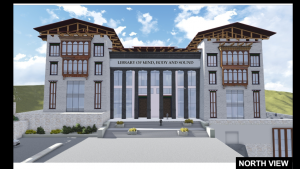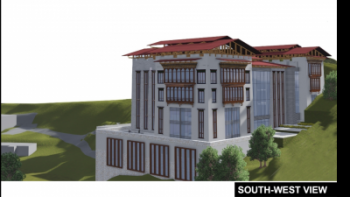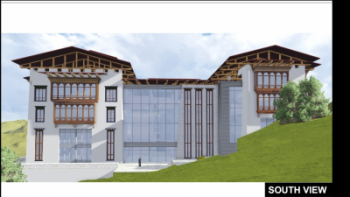
A library contains the world in so far as it contains all information on the world. All libraries, digital or physical, contain information specific to their specialization. The capital city of Bhutan, Thimphu, has over a hundred thousand people and is growing at 12% annually. Education other than religious education is a comparatively recent development in Bhutan, ushered in with our country’s modernisation programme which began only some 50 years ago. Although literacy is now widely established, interest in the activity of reading other than in connection with formal studies still has some way to go. The JDW Public Library (established in 1976) is geared towards recreational reading and children’s books, while the National Library (established in 1967) is focused on heritage issues and holds an extensive collection of religious literature and also a small but growing collection in English focused mainly on Buddhism, Bhutan and the Himalayan region, and thus geared towards the needs of scholars. The Library of MBS has been established to fill the needs of those searching for a different level of personal, spiritual and intellectual sustenance.
The title of the library – Library of Mind, Body and Sound – resonates a typical Himalayan concept of the actions of human beings who express them through mind, body and sound. Human beings manifest themselves through mental, physical and auditory mediums. But they may not manifest in a way that promotes wellbeing and happiness. That will require an appropriate set of facilities, knowledge and skills among the population and policies of the Bhutanese government and society.
Successive elected governments of Bhutan have demonstrated their commitment to follow GNH in their programmes and policies, as evidenced increasingly in the National Five Year Plans. The findings of GNH surveys conducted by the CBS&GNH at regular intervals serve to benchmark Bhutan’s national goals.
Our present Prime Minister, Tshering Tobgay has further demonstrated the government’s commitment to GNH, not only for Bhutan but for other nations who wish to emulate GNH, by funding the building of the Library of Mind, Body and Sound. But the government has not provided budget for internal equipment and other installations. The construction of the six-storied landmark building with a footprint area of 29,000 feet has reached the halfway mark and is expected to be completed by June 2018. It is one of the largest buildings in Thimphu, and is aimed at becoming the hub of knowledge, practices and training to transform the city’s population and its future generations in acquiring knowledge and skills about mind, body and sound towards happiness and wellbeing.
 The Library of Mind, Body and Sound of Bhutan will specialize in digital and book-based library services, research activities, and regular programs of exhibitions, lectures, shows, performances, exercises, singing, liturgy of voice, dance, yoga, tsa lung trulkhor, meditations and other skills-building activities in these three domains, for furtherance of the happiness and wellbeing that arises from the interrelation and intersection of body, mind and sound.
The Library of Mind, Body and Sound of Bhutan will specialize in digital and book-based library services, research activities, and regular programs of exhibitions, lectures, shows, performances, exercises, singing, liturgy of voice, dance, yoga, tsa lung trulkhor, meditations and other skills-building activities in these three domains, for furtherance of the happiness and wellbeing that arises from the interrelation and intersection of body, mind and sound.
Of the six floors, the first floor will be devoted to the body and its improvements for wellbeing. The second floor will house the library of sound and activities centred on both sound and its absence, that is, silence. The role of silence, music, vocalizations, infra and ultra sound in wellbeing and happiness will be experienced as much as noise pollution in undermining human happiness and health. The third and the fourth floors will encompass the general Library of Mind and the space for running activities designed to heighten mentalization, visualization, imaginations and meditations.
Dasho Karma Ura
President, Centre for Bhutan Studies & GNH